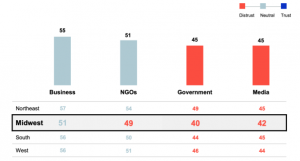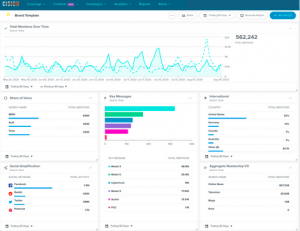By the year 2020, it is estimated that over 70% of the U.S. workforce will be mobile, or a total of over 105 million workers. At the same time, a recent study by Deloitte on global human capital trends found only 6% of leaders believed their workforce management process was worth the resources invested. These two trends when viewed together represent a worrisome proposition for the tens of millions of mobile employees who are disengaged.
The good news is it doesn’t have to be that way. B2B organizations who are employing mobile salespeople have numerous opportunities to build strategies that will work for their remote sales professionals, their clients, and the good of the entire organization.
Make sure your technology is compatible and integrated
To maximize the value of your mobile sales workforce, your technological solutions have to be working for you, instead of against you. If you have different tools, procedures, and standards for your in-house operations and your mobile employees, then you’re likely sunk already. If it hasn’t happened already, you’ll eventually fall victim to any combination of crippling inefficiencies, deteriorating morale, and inconsistent data quality.
Integration means when data is entered by a mobile sales rep, it is instantly accessible in exactly the same format by employees in the home office, and vice-versa. Regardless of location, your employees rely on the same systems and utilize the same formats and structures. Employing integrated technological systems makes it easier for your salespeople to do their jobs, enhances your ability to manage the sales process, and improves the overall experience for the customer.
Build collaborative opportunities into your process
Having a mobile sales team can benefit your organization in countless ways, but successful collaboration is one area that can suffer if you aren’t careful. It isn’t that salespeople who work remotely are necessarily less inclined to collaborate with their colleagues, but rather that, absent a shared workspace, many of the opportunities that facilitate teamwork just aren’t there.
Therefore, it’s up to leaders to consciously include collaborative processes and incentivize all team members to participate in these activities whenever possible. When your employees feel they are part of a strong team, they are more likely to be satisfied with their work. Close collaboration also ensures your messaging and brand positioning presented to customers is cohesive.
Standardize everything
When you have salespeople scattered and working in different environments, the best thing you can do for workforce management stability is make sure everything else remains as consistent as possible. Having different sets of rules, performance standards, incentives, or protocols can cause certain groups of your sales reps to feel they are playing on a separate field.
Aside from maintaining equal treatment of your employees, standardized practices help you manage your workflows more effectively. You’ll have set guidelines you can repeatedly turn to in order to evaluate the efficiency of certain processes, and you can quickly identify sources of bottlenecks.
Embrace every possible opportunity for feedback
Feedback is a crucial aspect of any sales workforce management strategy, but it becomes even more important when applied to the concept of mobile sales representatives. Because you personally interact with your on-premise colleagues almost daily, you may be able to pick up on certain nonverbal attitude changes, which can lead you to solicit feedback about changes in the organization. These opportunities are fewer and farther between for remote salespeople, so encouraging specific feedback on a regular schedule is paramount.
Place a priority on timely and effective communication — flowing each way on the organizational chart, and between employees on the same level. When remote salespeople feel comfortable sharing their thoughts on tasks and protocols with the team, the entire sales unit will reap the rewards of enhanced communication and feedback.
View every activity through the lens of the customer
Once again, the ancillary benefits of successfully managing remote sales work are numerous and wide-ranging. However, it’s important to never lose sight of the fact that the main reason for facilitating mobile work is exactly the same as the primary goal for every business function of your company: to enhance the experience for your customers, and to make it easier for them to buy your product.
That’s why you must view every aspect of your mobile workforce management from the customer’s perspective to truly decide whether or not it adds value. Because there really is no such thing as enabling your workforce while inconveniencing your customers at the same time.
Business & Finance Articles on Business 2 Community(58)





